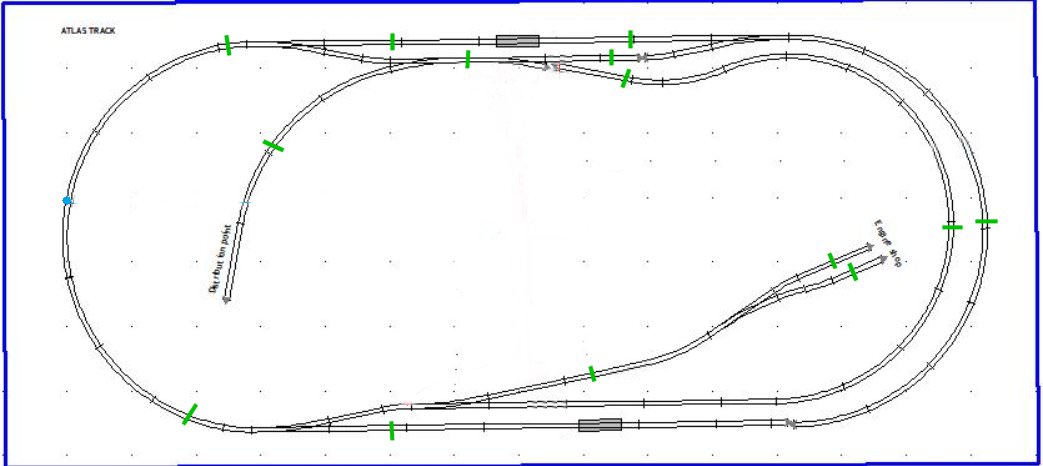Paul,
To add to what Greg said, here is how I might wire the layout:
Not sure what turnouts you will be using so this is based upon Peco Insulfrog or any non electrofrog type turnouts. I like to add feeders to "at least one end of my turnouts to ensure they do get the power needed. Again, this is just a personal preference.
As Greg said, wiring for basic DCC is not hard at all, in fact, no harder than wiring for DC. To keep it very basic - run your wires from the power source (your controller) to the track and that's it, it is that simple. All adding feeders does is ensure a good, solid power supply to the areas of the track work the feeders are attached to.
Running a DCC system is just as easy at a basic level. All DCC equipped engines are pre set to a code, a number. Normally that code or number is 03. That is what the DCC controller uses to identify the engine. Therefore, if you have one engine and put it on your track with the controller set to 03 (a default setting I think) then your engine will run.
Each engine comes with its own number though, ie: 4478 that is printed on the engine itself. You can change the 03 number (default) to the actual engine number, in this example 4478. That then becomes the number that your system uses to identify that engine allowing you to run it independent of any other engine on the layout.
If you buy another DCC equipped engine, and you have changed your first to its own number, the second engine will have a default identifying number of 03. You can then run that on the layout, with the first engine (4478) at the same time BUT need to change your Controller from on e number to the other to have control over that engine. So, if you run engine number 4478 and engine number 03 together, you can set the speed etc of engine 03 and let it run on it's own. You can set your controller to engine 4478 and be able to fully control that engine with the controller while engine 03 does it's own thing in accordance with how you first set that up, speed etc.
It sounds complex, but it really isn't once you learn how to set the individual engine numbers in your controller. Normally, or at least with NCE, you use a button on the controller to change between your engines. The hardest part is setting up the engine numbers.
Of course you could set the engine numbers as anything you want.
 Doing things step by step is a good and logical way to go about it.
Doing things step by step is a good and logical way to go about it.

